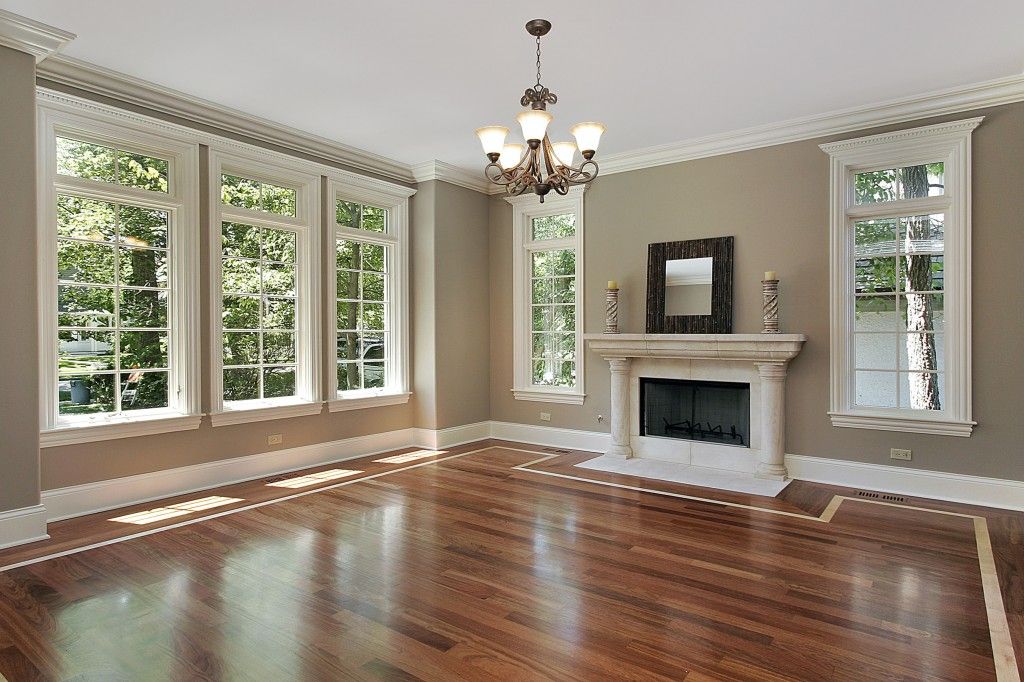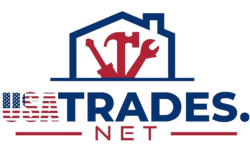
I. Introduction to choosing the right paint
The Importance of Choosing the Right Paint. If you’re not very familiar, then this article will help. If you’re an independent contractor then this information is especially important for you to know.
Choosing the right paint is crucial for achieving the desired finish, durability, and aesthetics in your projects. Factors like surface type, location (interior or exterior), and intended use play a significant role in this decision.
Visit our article on selecting the right paint brush.
II. Water-Based Paints
Often referred to as latex or acrylic paint, is a popular choice for both DIY enthusiasts and professional painters. It’s a type of paint where water serves as the primary solvent, replacing the traditional solvents found in oil-based paints.
Imagine you’re about to give your home a fresh coat of paint. You head to the paint store, and you’re faced with a choice: water-based or oil-based paint. Let’s focus on water-based paint for now.
Water-based paint is a fantastic option for a variety of reasons.
First and foremost, it’s much more eco-friendly than oil-based paint because it contains fewer harmful chemicals and emits fewer volatile organic compounds (VOCs) into the air. This makes it a safer choice for both you and the environment.
One of the standout features of water-based paint is its easy cleanup.
Since it’s water-soluble, all you need to clean your brushes and tools is, you guessed it, water! No need for harsh solvents or thinners. This convenience alone can save you a lot of time and hassle.
Water-based paint also dries relatively quickly.
which is a blessing if you’re working on a project with a tight schedule. You can often apply a second coat within a few hours, compared to the longer drying times of oil-based paint.
Moreover, water-based paint comes in a wide range of colors and finishes, from matte to glossy.
This versatility means you can achieve the exact look you want for your home, whether you’re painting walls, furniture, or even kitchen cabinets.
- Interior Use: Latex paint is an excellent choice for indoor walls, ceilings, and trim. It dries quickly and emits fewer fumes.
- Exterior Use: It’s also suitable for outdoor applications like siding and fences.
- Recommended Application Tools:
- Roller: Use a high-quality synthetic roller with a 3/8-inch nap for walls and ceilings. For trim, a high-quality angled brush is suitable.
- Advantages: Latex paint is easy to clean up with water, resists yellowing, and has excellent color retention.
- Disadvantages: It may not adhere well to some surfaces, and it’s less durable than oil-based paints in high-traffic areas.
- Use this printout as a quick reference guide on the difference between latex and oil-based paints, by William D. Frye, Ph.D., CHE
III. Oil-Based Paints
Also known as alkyd paint, is another popular type of paint used in various home improvement and artistic projects. It’s a paint that uses oil, typically linseed oil, as its primary solvent. Let’s dive into the world of oil-based paint in a conversational tone suitable for blog readers:
Imagine you’re embarking on a painting project, and you’re standing in the paint aisle of your local home improvement store. You’ll likely come across oil-based paint among the options, and it’s worth getting to know this classic choice.
Oil-based paint is known for its durability and versatility.
One of its standout features is its ability to create a smooth, glossy finish that’s incredibly resilient. This makes it an excellent choice for surfaces that endure a lot of wear and tear, like doors, trim, and even some exterior surfaces.
One of the reasons oil-based paint is so durable is its resistance to moisture.
It doesn’t easily absorb water, making it suitable for bathrooms, kitchens, and other high-humidity areas. This quality can help prevent mildew and mold growth on painted surfaces.
Another advantage of oil-based paint is its adhesion.
It tends to bond exceptionally well to surfaces, ensuring a long-lasting finish. If you’re painting over a surface that has been previously coated with oil-based paint, you can usually apply a new layer without any issues.
- Interior Use: Alkyd paint is suitable for high-traffic indoor areas like kitchens and bathrooms.
- Exterior Use: It’s excellent for exterior trim, doors, and metal surfaces.
- Recommended Application Tools:
- Brush: A high-quality natural bristle brush is recommended for a smooth finish. A roller can also be used for large surfaces, but brushes are often preferred for trim and detailed work.
- Advantages: Alkyd paints provide a smooth, durable finish, and they resist stains and moisture.
- Disadvantages: They emit strong fumes, require mineral spirits for cleanup, and can yellow over time.
IV. Specialty Paints
Epoxy paint
Epoxy paint is renowned for its remarkable durability, making it a top choice for demanding environments like garage floors and industrial settings. It’s a two-part paint system that combines resin and hardener, resulting in a surface that can withstand heavy foot traffic, impacts, and even exposure to chemicals.
Epoxy comes in various formulations tailored to specific surfaces, from concrete floors to countertops, and it’s celebrated for its easy-to-clean, smooth, and non-porous finish. Beyond its practicality, epoxy paint offers aesthetic versatility with options for different colors and even metallic effects. Though its application requires careful preparation, the lasting benefits of an epoxy-coated surface make it a worthwhile investment.
- Industrial Use: Epoxy paints are designed for industrial floors and high-traffic areas where extreme durability is required.
- Garage Floors: They are commonly used on garage floors to resist stains and chemicals.
- Recommended Application Tools:
- Roller: Use a solvent-resistant roller with a short nap for even application on floors.
- Brush: A brush may be needed for edges and corners.
- Advantages: Epoxy creates a tough, chemical-resistant surface that can withstand heavy use.
- Disadvantages: It’s not the easiest paint to apply, often requiring professional installation.
Chalkboard paint
Chalkboard paint opens up a world of creative possibilities by transforming everyday surfaces into interactive canvases. Whether it’s your kitchen wall for jotting down grocery lists and recipes, a child’s bedroom turned into an artistic playground, or a piece of furniture revitalized with a chalkboard finish, this water-based paint brings versatility to your home.
Infused with tiny chalk-like particles, it dries to create a writable and erasable surface, allowing you to write, draw, or organize with ease. Chalkboard paint isn’t limited to traditional black or green; it comes in various colors, offering options to match your decor or inspire unique color schemes. Maintenance is straightforward with regular cleaning using a damp cloth or chalkboard eraser to keep the surface looking fresh and functional, making it an ideal choice for both practical and creative spaces in your home.
- Creative Applications: Chalkboard paint turns surfaces into writable and erasable chalkboards, making it popular for creative projects.
- Recommended Application Tools:
- Roller: A foam roller is recommended for a smooth, even chalkboard surface.
- Advantages: It’s a fun way to add functionality to walls, furniture, or even doors.
- Disadvantages: The surface may require regular touch-ups to maintain its appearance.
V. Paint Finishes
The paint finish you select is largely about aesthetics. What do you want the object you’re painting to look like as far as how it responds to lighting? A basic rule of thumb is: that ceilings are painted in a flat finish, walls are painted in satin or eggshell finish, and trim and doors are painted using a semi-gloss finish. This is not a must, it comes down to personal preference. I have seen: both walls and ceilings finished in satin, and I have seen trim painted using an oil-based paint.
I recommend asking the professionals at your local paint store. But, reading this article will help you understand a little more about the different finishes.
We recommend the following application methods for the finishes listed below.
A. Flat Finish
- Roller: Use a roller with a 3/8-inch nap for smooth, even coverage on walls and ceilings.
- Brush: A high-quality synthetic brush for cutting in and detailing.
B. Eggshell Finish
- Roller: A 3/8-inch nap roller for walls.
- Brush: A high-quality synthetic brush for cutting in and detailing.
C. Satin Finish
- Roller: A 1/4-inch nap roller for smooth application.
- Brush: A high-quality synthetic brush for trim and edges.
D. Semi-Gloss Finish
- Brush: A high-quality synthetic brush for trim, doors, and cabinets.
- Roller: A 1/4-inch nap roller for even application on flat surfaces.
E. Gloss Finish
- Brush: A high-quality synthetic brush for detail work.
- Roller: A foam roller for a smooth finish on large, flat surfaces.
VI. Exterior Paints
Exterior paints vary depending on the surface type and weather conditions. Choosing the right paint, finish, and application tools is essential for maintaining the appearance and durability of outdoor structures.
VII. Interior Paints
Interior paints come in various finishes, each suited for different areas within your home. Understanding these finishes and using the right application tools will help you achieve the desired look and performance.
VIII. Conclusion
In summary, choosing the right type of paint, finish, and application tools is essential for achieving the best results in your projects. Consider the surface, location, intended use, and desired sheen when making your selection. Proper surface preparation, including cleaning and priming, is also crucial. Whether you’re painting indoors or outdoors, understanding the characteristics of each paint type, finish, and the right tools will help you achieve professional-quality results.
This comprehensive guide now includes recommendations for the proper roller or brush types for each paint type and finish. If you have any more questions or need further information, feel free to ask!
Looking for an awesome selection of great paints? We suggest you take a look at Sherwin-Williams and PPG Paint stores.

